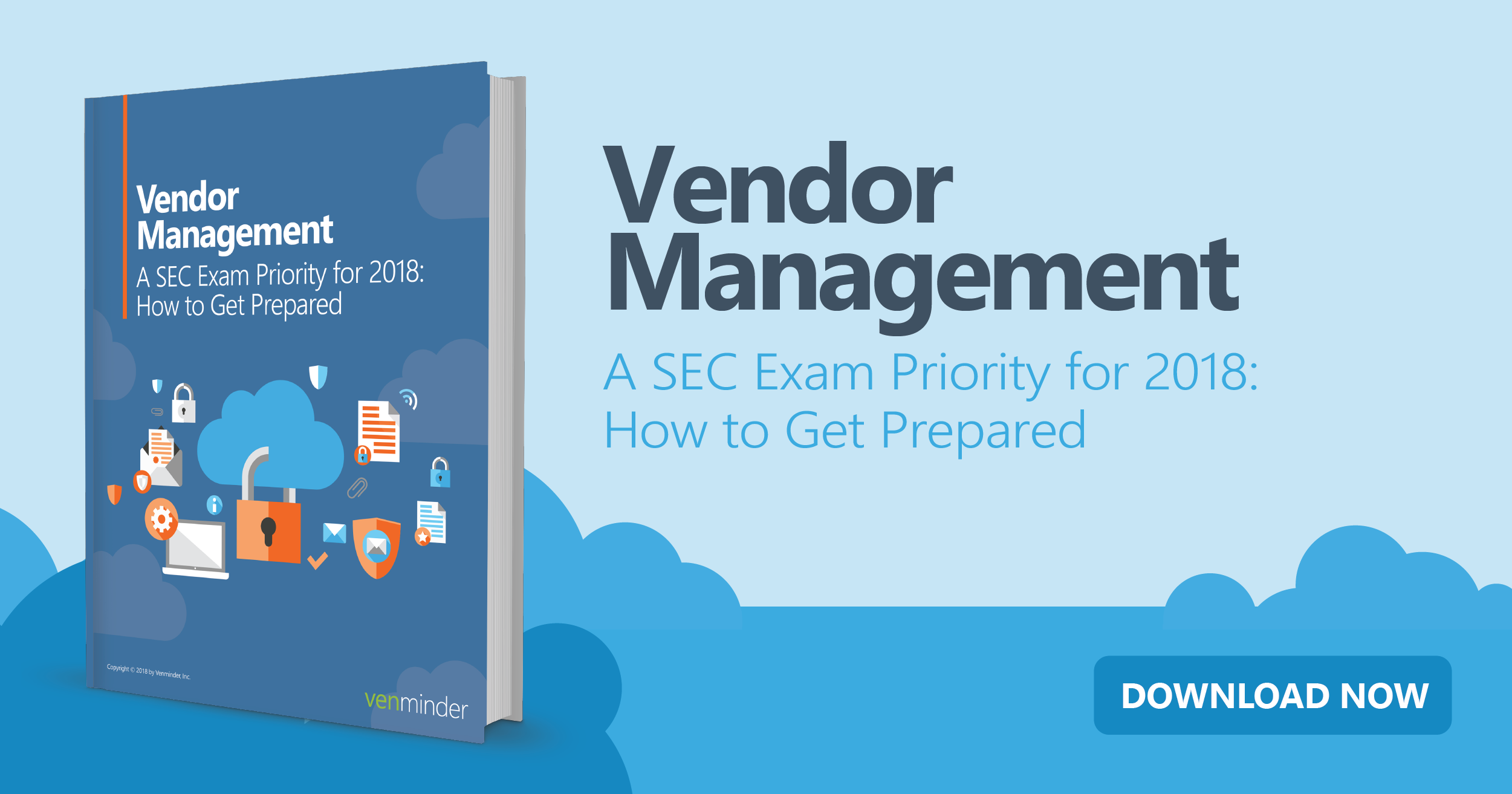Hardly a week goes by that we don’t learn of some new major breach, incident or some emerging cybersecurity threat. Think Swift attacks, Equifax or Yahoo. It seems no one is immune from cybersecurity issues.
Regulatory Spotlight: Cybersecurity
With that as a backdrop, it’s no surprise that regulators and even the previous presidential administration have sought to put cybersecurity squarely in the regulatory spotlight. Last year, Forbes wrote a terrific article on the importance of the role of the board in being aware of and actively involved in matters related to cybersecurity. You can find that article here. It paints a stark need for company boards to up their game in terms of being involved in guiding decisions and doing appropriate planning.
More recently, the Securities and Exchange Commission issued new guidance on cybersecurity disclosures in late February 2018. Pre-eminent financial services law firms with whom Venminder has a strong working relationship also wrote a compelling analysis of what this new guidance means. Check it out here.
In addition, Congress is getting involved and has proffered a bill that will direct companies to determine if they need a cybersecurity expert on the board of directors. An article written on CSOOnline recaps the highlights here. As you can see, cybersecurity is a very hot topic right now.
So whether directly involved or even having a seat at the table, responsibility for managing a company’s cybersecurity/vendor cybersecurity posture falls squarely on the board and senior management. It’s not enough to have a simple response plan; it’s far better to have a proactive and forward-looking manner in which to address these matters.
How Your Board Can Stay Involved in Cybersecurity
Examples of ways the board can stay involved and proactively engage in their business cybersecurity/vendor cybersecurity posture include:
- Create a direct link between the Board and Security Senior Management that sets expectations for cybersecurity
- Have oversight (and responsibility) of risk mitigation strategies, systems, processes, and controls surrounding cybersecurity.
- Understand the cyber risk at the organization and be involved with the assessment of current cyber policies and practices.
- Understand and adhere to the same practices as the employees at the organization when dealing with company information and protecting information.
Even at the largest institutions with many resources, this can be challenging. But we’re here to help with a team of information security professionals who are experts in the industry. We’ve worked with companies of all sizes to plan and implement appropriate programs.
Interested in learning more about cybersecurity and how it relates to the SEC Priorities? Check out our infographic here!



















